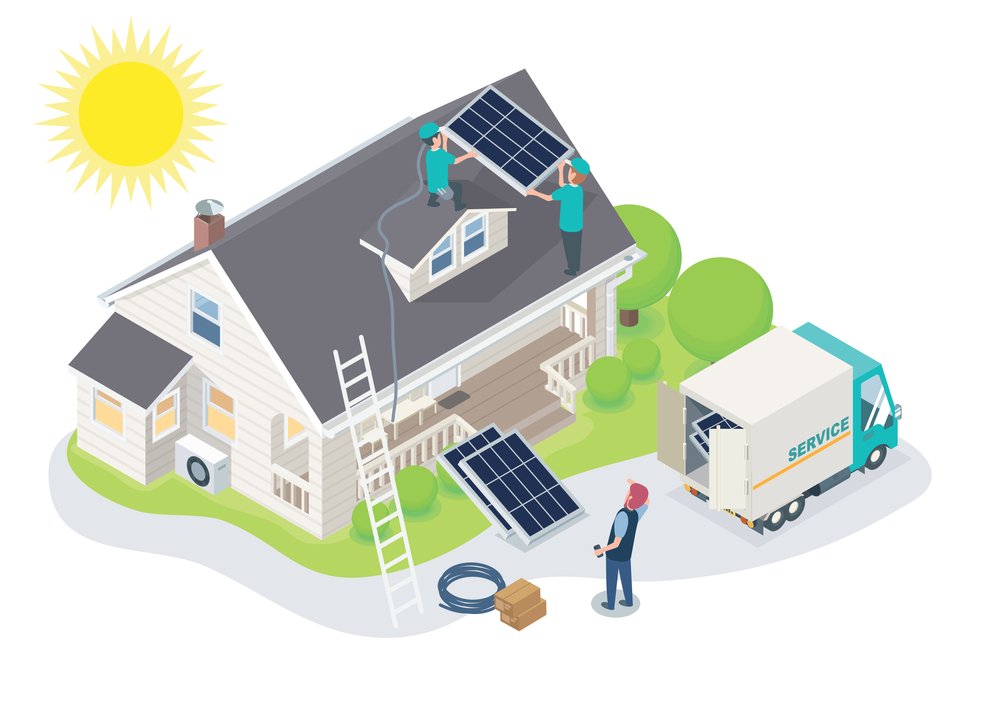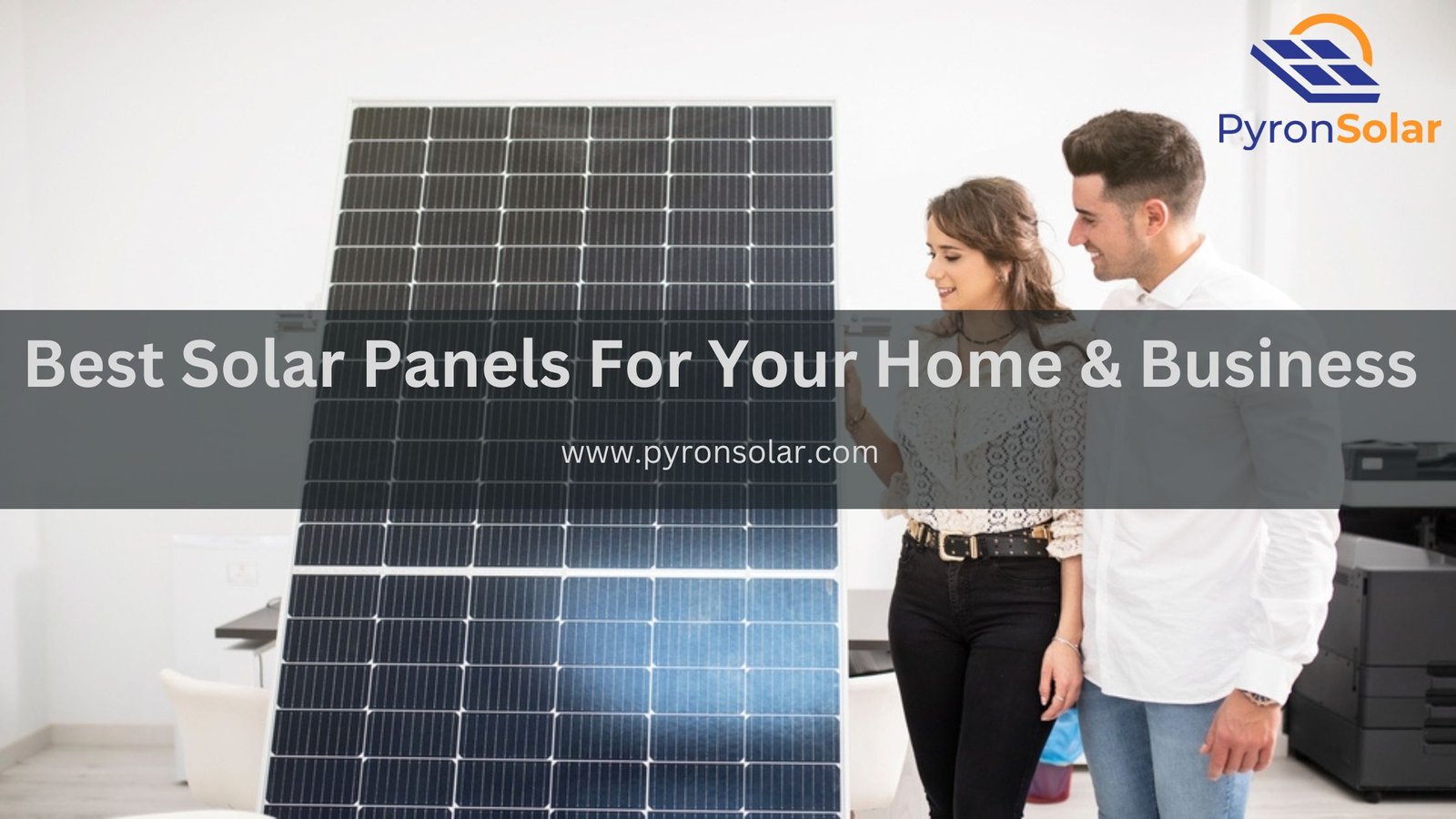Solar Panels are semiconductor devices that harness direct sunlight and convert it into electricity through the photovoltaic process without emitting any greenhouse gases. According to the data from the U.S. Energy Information Administration, residential solar power installation increased by 34% from 2.9 gigawatts (GW) in 2020 to 3.9 gigawatts (GW) in 2021 and gained huge popularity in the USA with an annual requirement of 24% and capacity above 110 GW in 2022.
Ensuring solar panels with maximum efficiency and sustainability reduces overall cost and time. In other words, higher-efficiency panels with lower temperature coefficients have enhanced output rates that repay the energy used within the shortest possible time and minimize environmental impact.
As a prospective buyer, if you’re searching for the best quality in the market among different types that offer superior performance and longer warranty periods, then you have landed at the perfect destination to gain valuable insights in detail…
Factors for Selecting the Best Solar Panel

Your Energy Needs
Every individual can accurately assess their energy consumption to determine the optimal size and quantity of solar panels required for their needs by evaluating factors such as average daily energy consumption, number of solar panels needed
By using the below formula, you can accurately estimate the daily energy needs in kWh let us consider an example of 500 watts refrigerator that runs 8 hours a day:
Energy requirements of refrigerator = (Power of any electrical appliance in watts) x (Number of hours per day)
= (500 watts) x (8 hours)= 4000 Wh / 1000 = 4 kWh
Similarly, calculating the total energy requirements of all electrical appliances:
= (Refrigerator+ Lights+ Fans)
= (4+1+2) Kwh = 7 kWh of energy would be required per day to run all basic appliances
To estimate the average monthly needs, you need to multiply into 30 days:
= 7kWh x 30 days = 210 kWh.
Cost of Solar Panels
Several factors influence the cost of solar panels such as:
- Price of polysilicon: A highly pure form of silicon (known as polysilicon) is a core material to form solar cells and solar modules. According to IEA, a 100% increase in polysilicon results in a 2.2% increase in the investment cost of PV systems.
- Custom Duties: Individual customs duties play an essential role in maintaining solar power in targetted companies. It helps to outlast imported solar panels by increasing cost and making regionally generated options more attractive.
- Metal and Energy Prices: The increase in metal prices like Aluminium and copper requires huge energy for manufacturing that increases the overall investment cost between 1.4% to 4.9%.
- Production scale: Large-scale production results in lower economies and reduces the price of solar panels.
Investing in high-quality solar panels results in long-term benefits and savings as it helps to gain government incentives, increase efficiency and energy production, improve durability and longevity, and satisfy aesthetics.
Cost should not be the sole deciding factor in the selection process since you need to evaluate several other elements such as longevity, durability, efficiency, additional equipment, brand and geographic location.
Type of Solar Panel

Here are the features, advantages and limitations of three main types of solar panels such as:
Monocrystalline solar panels:
- Features: Made of a single cell of silicon.
- Advantages: Have an efficiency of 15% to 22%.
- Limitations: Highly expensive.
Polycrystalline solar panels:
- Features: Made of multiple silicon fragments.
- Advantages: Cheaper manufacturing and low costs.
- Limitations: Lower efficiency rate (13% to 16%) due to less number of pure silicon used.
Thin film solar panels:
- Features: The 2nd generation technology is manufactured using multiple layers of PV cells and uses less semiconductor materials.
- Advantages: Lightweight, flexible and cost-efficient materials and energy consumption due to thin and uniform structure.
- Limitations: Lower efficiency and less durability than other silicon counterparts.
Different solar panel system types will influence these factors such as:
- Overall efficiency: Monocrystalline panels have higher efficiency due to the ability to generate more electricity by occupying less space compared to polycrystalline panels which require huge space.
- Cost-effectiveness: As the prices of solar energy continue to drop, polycrystalline and thin film solar panels will prove to be a more cost-effective option than monocrystalline.
- Functioning: Monocrystalline silicon cells (made of a single silicon structure) absorb more sunlight than polycrystalline (multiple silicon structure) and thin film cells (multiple PV cells)
Output Rating and Efficiency Of Solar Panels
A solar panel’s output rating and efficiency level influence its power production capacity in the following ways:
- Output Rating in terms of wattage is the entry step in evaluating a panel’s power potential under ideal conditions known as the Standard Test Conditions (STC).
- Efficiency is important in determining the amount of sunlight converted into usable electricity. The higher efficiency rating indicates more power from the same amount of sunlight.
It is important to consider a solar panel’s efficiency alongside its size and wattage when selecting panels because larger panels (typically 78 inches by 39 inches) contain more PV cells which leads to higher power generation of 2-3kWh per day.
Solar Panel Temperature Coefficient
The temperature coefficient is an essential metric to calculate how temperature fluctuations influence solar panel efficiency. In other words, it is a parameter on how the panel’s performance varies with temperature. A positive temperature coefficient indicates the decreased efficiency of the panel with the increased temperature and vice versa for a negative temperature coefficient.
A lower coefficient is preferred for higher performance stability due to these main reasons:
Declined Efficiency: Higher temperatures can decline the PV conversion efficiency of solar panels due to the increased scattering losses of charge carriers that slow down the electron’s movement.
Thermal Distortion: Increased temperature often causes thermal distortion in solar panels that affect the panel structure, material quality and performance thereby damaging the mechanical strength.
Reduced Lifespan: The ageing process of solar panels is accelerated due to the continuous operation of solar panels in high-temperature conditions that cause material degradation as well as wear and tear of internal solar cell components, thereby diminishing their lifespan.
Electrolyte Loss: High temperature results in loss of electrolytes that affect the stability and performance of solar cells.
Thermo-Optical Effects: Solar panels are highly sensitive to thermo-optical effects where a portion of sunlight is converted into heat energy that leads to an increase in the panel’s temperature. This creates a favourable feedback cycle that makes the panel more vulnerable to overheating.
Solar Performance Guarantee
A solar panel manufacturer guarantees the performance that marks a special significance such as:
- Works Efficiently for long term.
- Assurance of delivering certain performance during the certified period which is typically 10–25 years, depending upon the manufacturer.
- Repair and replace the solar panels if the performance reduces during the warranty period.
However, the guarantees vary across different solar panels based on key factors such as degradation rate (0.4% per year to 0.7% per year), minimum performance level and rectification.
Warranty
The Solar panel performers offer several types of warranties such as:
1. Product Warranty: Your solar panels are replaced for free if they break down due to material or workmanship defects that have a standard period of 10–25 years from various reputed brands.
2. Power Warranty: The power warranties are higher than the product warranties as most manufacturers offer a tenure of 25–30 years. A high-quality panel undergoes a productivity loss of just 2% to 3% in the initial year, and later it is less than 0.5% per year. It means that solar panels produce 85% of the first electricity output after 25 years.
3. Installation Warranty: Your photovoltaic system is covered through the additional protection through the solar installation warranty that includes components like racking and wiring. It rectifies issues such as improper installation practices or faulty equipment used.
4. Workmanship Warranty: Typically, a workmanship warranty lasts for 5–10 years, which covers the labour and material cost of installing solar panels.
5. Inverter Warranty: Any malfunction or failure in the components can be rectified with the help of an inverter warranty which is an important element in analyzing the entire quality of a solar panel installation that will be safeguarded from defects in materials. This warranty lasts for 5–25 years and few manufacturers offer extended warranties for an additional fee.
These warranties offer protection to the buyer from various defects and performance issues and ensure that solar panels deliver expected output over their lifespan, thereby providing long-term value from the system.
Overall Quality of Solar Panels
Conducting thorough research on solar panel manufacturers and reading customer feedback about the overall quality is vital that help you determine the capacity to withstand harsh climatic conditions outdoors. As a result, you have to choose a reputable manufacturer with a proven track record of producing superior-quality panels as they might have often performed complex testing and have a proven track record of satisfying customers. They can generate cleaner energy for many years to maximize your return on investment as well as reduce the need for expensive repairs and replacements.
Conclusion
Ultimately, choosing the best solar panel for your home or business in 2024 is a crucial decision that requires in-depth research before planning for a long-term investment. This not only helps to generate substantial savings on your energy bills but also promises a more sustainable future.
Most importantly, you need to understand the various types of solar panels, their efficiency, durability, and warranties provided by the manufacturers.
Once you are done with your research by carefully reviewing customers’ feedback about the performance of solar panels and gaining confidence in the insights gained, the next step is to search for a nearby solar installer. This will ensure high-quality work and local regulations followed by assuring long-term support.
What are the best solar panels available in the market?
These are the best solar panels available in the market listed below along with their efficiency, warranty, and cost:
SunPower M series SPR-M440-H-AC:
- Efficiency: 22.8%
- Warranty: 25 years
- Cost: $2.98- $4.47 per watt.
Panasonic EverVolt HK EVPV Black 410-Watt:
- Efficiency: 21.6% to 22.4%
- Warranty: 25 years
- Cost: $2.91-$4.37 per watt
REC Alpha Pure-R 430 W:
- Efficiency: 22.2%
- Warranty: 25 Years
- Cost: $2.72- $4.37 per Watt
Jinko Solar Tiger Neo N-type 54HL4R-B 440 W:
- Efficiency: 22.02%
- Warranty: 25 Years
- Cost: $2.20- $3.30 per watt
Q CELLS Q TRON BLK M-G2+ 430 W:
- Efficiency: 22.4%
- Warranty: 25 Years
- Cost: $2.32 to $3.16 per watt
How Can Prospective Buyers Identify the Most Efficient Solar Panel Type Currently Available on the Market?
Every potential buyer can easily identify the most efficient solar panel type that is right now available on the market by checking out several factors such as Cell and Panel Efficiency, the latest technology and the manufacturer’s reputation.
Ray is an avid reader and writer with over 25 years of experience serving various domestic and multinational private and public energy companies in the USA.

